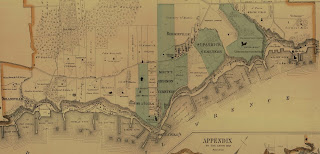MONTREAL – Montrealers gathered in Pointe-Saint-Charles Sunday for a mass followed by a two-kilometre walk to the Irish Commemorative Stone.
Victor Boyle, president of the Ancient Order of Hibernians, said the walk is a tradition that dates back more than 150 years.
The stone, known as the Black Rock, is a tribute to the immigrants who landed on the shores of Montreal starting in 1847.

Most were Irish immigrants who fled hunger and poverty in Ireland only to die of typhus contracted on their overseas voyage.
An estimated 6,000 dead are believed to be buried under the stone and include not only Irish immigrants but also those who cared for the sick.
”Remembering how much they suffered to get here pays homage to our own heritage,” Boyle said.
The annual event isn’t only about honouring the dead, it’s also about recognizing the contributions of the Irish to Quebec society.
“The Irish came here in 1847 under the worst possible conditions,” Boyle said. “But they were still able to survive and influence the city of Montreal, the people of Montreal, the people of Quebec in general. We’re part of the fabric of this society.”The monument stands near the Victoria Bridge between two stretches of Highway 112.
Members of Montreal’s Irish community have been pushing to have the area surrounding the Black Rock turned into a green space, arguing that a memorial park would be a more fitting tribute.
But that is a fight for another day. Participants in Sunday’s march were heading back to Pointe-Saint-Charles for a reception in the church basement.
“After the ceremony, we come back and have some food and drink,” Boyle said. “Which is a typical Irish tradition.”
Montreal Irish Memorial Park Foundation
Copyright ©2016 Linda Sullivan-Simpson










